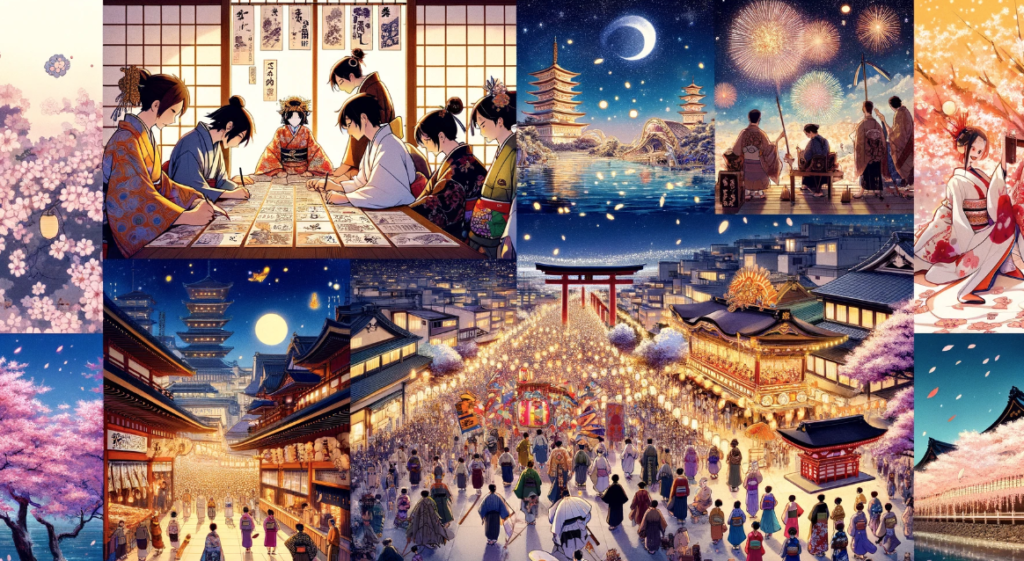
Lesson 12. Festivals and Their Origins
Topic Question: What are some popular Japanese festivals and their origins?
No. 1
First, try answering the question yourself.
The instructor will provide advice on vocabulary, grammar, and expression corrections.
Sample Answer – Let’s read aloud – The instructor will check your pronunciation and accent.
Japanese festivals, known as “matsuri,” are deeply rooted in the country’s culture and history, reflecting the community’s beliefs, seasons, and historical events. One of the most iconic is the “Gion Matsuri” in Kyoto, originating from a purification ritual to appease the gods during an epidemic in the 9th century. Another significant festival is “Tanabata,” based on a Chinese legend, celebrated by writing wishes on tanzaku and hanging them on bamboo. The “Sapporo Snow Festival” showcases magnificent ice sculptures, attracting visitors worldwide, symbolizing the embrace of winter’s beauty. Each festival, from the “Awa Odori” dance festival in Tokushima to the “Kanda Matsuri” in Tokyo, carries unique traditions and stories, contributing to Japan’s rich cultural tapestry.
No. 2
5 Words to Learn and Their Meanings – Pronounce the Words Correctly (Pronunciation Training) + Make Sentences Using the Words Instantly
1. Matsuri (祭り): Festival; a celebration of traditional Japanese culture, often involving processions, performances, and street food.
Every summer, our town holds a matsuri, where everyone gathers to enjoy traditional dances and food.
2. Purification (浄化): The act of cleaning by removing impurities.
The purification ceremony at the temple was a solemn and beautiful event.
3. Tanzaku (短冊): Small pieces of paper on which people write wishes during the Tanabata festival.
Children and adults alike write their wishes on tanzaku and hang them on bamboo trees during Tanabata.
4. Magnificent (壮大な): Impressively beautiful, elaborate, or extravagant.
The magnificent castle stood tall, overlooking the entire city.
5. Tapestry (タペストリー): Something that is complex or detailed in a way that is interesting and attractive.
The cultural tapestry of the country is woven from its diverse languages, traditions, and customs.
No. 3
3 Key Phrases and Example Sentences
1. Rooted in culture (文化に根ざす)
The practice of tea ceremony is deeply rooted in Japanese culture as a symbol of hospitality and tranquility.
2. Epidemic (流行病)
Historical records show that the city organized a large festival to protect its citizens from an epidemic.
3. Symbolizing the embrace (受け入れを象徴する)
The lighting of lanterns during the festival symbolizes the embrace of peace and hope for the community.
No. 4
Discussion and Exchange of Opinions on the Sample Answer
Instructor: How do you think festivals like “Gion Matsuri” and “Sapporo Snow Festival” contribute to community and tourism in Japan? Can you think of festivals in other countries with a similar impact?
Student: [Opinions of students]
No. 5
Free Discussion on the topic
Let’s explore the significance of festivals in preserving cultural identity. How do traditional celebrations adapt to modern times while retaining their historical essence? Are there any local or regional festivals in your area that hold a special meaning for the community?







